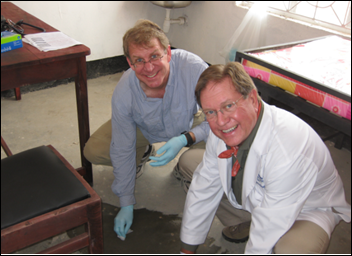CIO Unplugged 3/21/18
The views and opinions expressed are mine personally and are not necessarily representative of current or former employers.
This is my final HIStalk “CIO Unplugged” post.
I began “blogging” 15 years ago as CIO with University Hospitals in Cleveland. It was an internal, interactive SharePoint hosted site. It became an effective tool to engage my team. I shared what was going on with the health system and IT and asked questions to solicit feedback. It worked well, so I adopted the same format at Texas Health.
A member of my team suggested that I share my blog broadly via a national forum. She entered me in a “contest,”submitting samples, Bam! “CIO Unplugged” was born. When the publication folded, Mr. HIStalk picked me up.
It’s a labor of love involving 10 years’ worth of bi-monthly posts on a wide range of topics. I purposely avoided hardcore technology topics since you get plenty of that content already. Harder to find is transparent insight into what at least one CIO thinks about, primarily around life, teamwork, and leadership.
Through the years, I acknowledged many individuals who enabled my professional endeavors. Everyone from parents, siblings, family, friends, managers, teams, and pastors. I will use my final post and give thanks one more time to those who did the real work — my teams, the IT caregivers.
I have the privilege of representing my teams in good and bad, and it is overwhelmingly good. While I received accolades in my journey, it is all about the teams that make things happen. The teams are the individuals who make all the good possible. Saving lives, impacting quality of care, lowering costs, and enabling the fulfillment of organizational goals and missions and visions. Despite attempts to deflect light received onto them, they often remain in the shadows, hidden.
Leaders often forget that without teams, we are nothing. It is all about the teams who work in the trenches. Trenches (cubes, offices, home, etc.) are where real work gets done. Trenches are where sacrifices are made. Trenches are full of unsung heroes. Trenches are where lives are saved.
While we are at conferences, our team is in the trench. While we do interviews, our team is in the trench. While we attend meetings, our team is in the trench. While we write blogs, our team is in the trench. When we vacation, our team is in the trench.
I will end calling out three individuals who serve in the trench. My assistants, who I prefer to refer to as partners.
Carol (2003-2007). My very first partner. Brash and sassy, she had my back. She was strong and never took no for an answer as she opened doors previously closed to enable my success. A pastor’s wife, she prayed for me, and boy, did I need it! Attending her mother’s funeral, Carol surprised all of us with skill and passion playing drums for a 30-minute solo rivaling Neal Peart and John Bonham. Carol helped me become a CIO. Now retired, we connected when I returned to Cleveland and had a good time catching up.
Dedie (2007-2015). I knew the moment we interviewed that Dedie was the one to help me be successful in Texas. A Katrina refugee, Dedie and I hit it off immediately. While she appears much younger, we are both 1980s kids and would easily have been high school buddies. Dedie jumped on a few grenades for me and shielded me. Also a pastor’s wife, she prayed for me daily. I loved visiting her church. I bettered my speaking abilities watching her husband preach. When I divorced, Dedie and Thad walked through the valley with me until I remarried. Our friendship continues today.
Virtual (2015-2017). Having no partner while in NYC reminded me how much I missed having one.
Dara (2017-20XX). It has only been a few months, but I can already tell that we are hand and glove. Dara came from within my organization, so we have a huge head start. She is proactive and stays one step ahead of me. I was overwhelmed recently with presentations and she put together presentation starter sets that cut my creation time in half. Dara creates space in my schedule for reflection and ensures that I take care of myself. We have dined with spouses and have built a firm foundation for many years to come. I hope Dara is my last partner.
To those who served with me in the trenches, thank you. What inspiration, strength, and hope you gave me knowing you were there. You did amazing things. When it all comes down, it is really about you who are serving in the trenches. You are the ones who save lives. You are the ones who make a difference in the lives of caregivers and patients. Silently. Quietly. Hidden. In the trenches.
Thank you, Mr. HIStalk, for having me all these years.
“CIO Unplugged” may continue. Connect with me on LinkedIn to learn more.

Ed encourages your interaction by clicking the comments link below. He can be followed on LinkedIn, Facebook, and Twitter.











I've figured it out. At first I was confused but now all is clear. You see, we ARE running the…